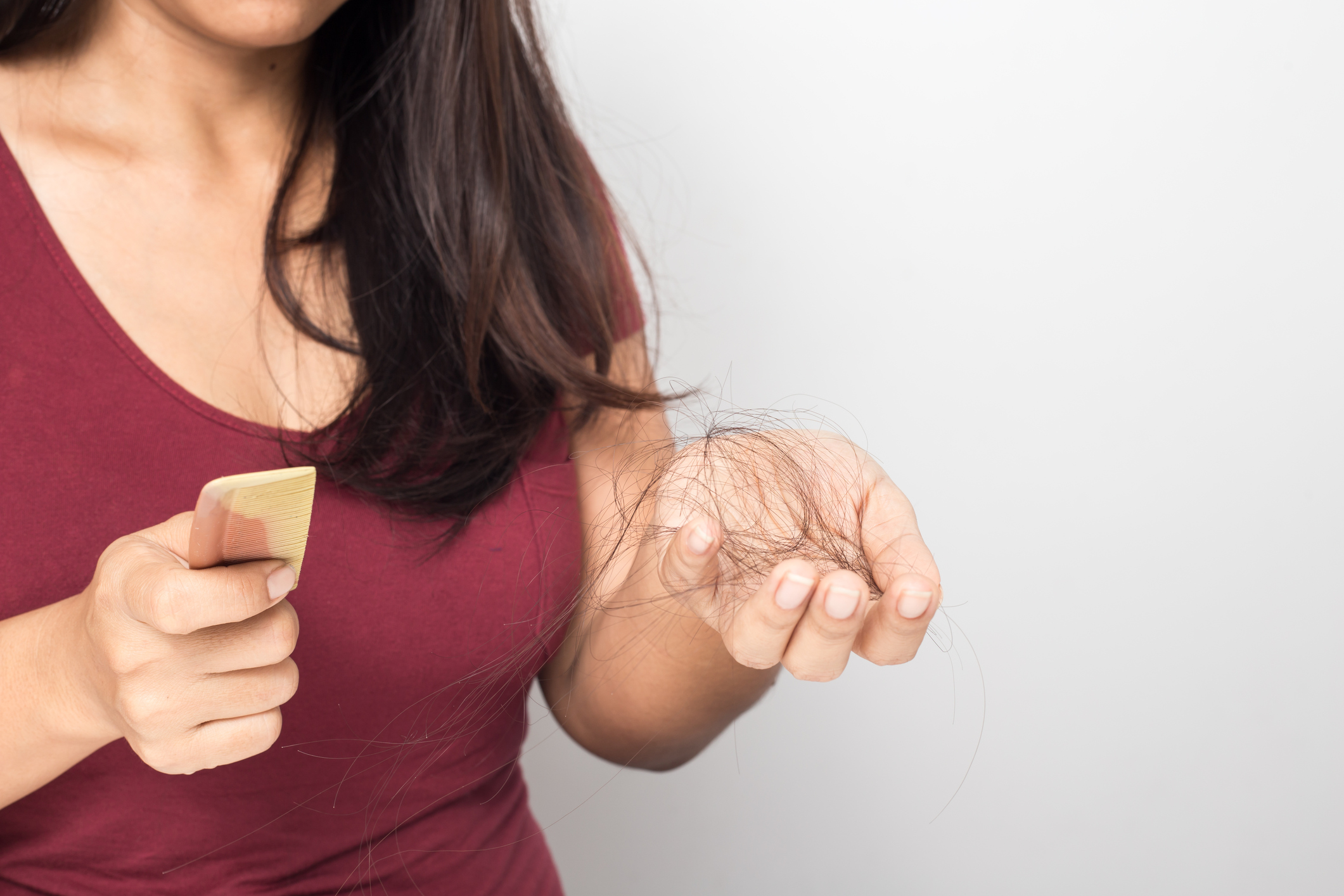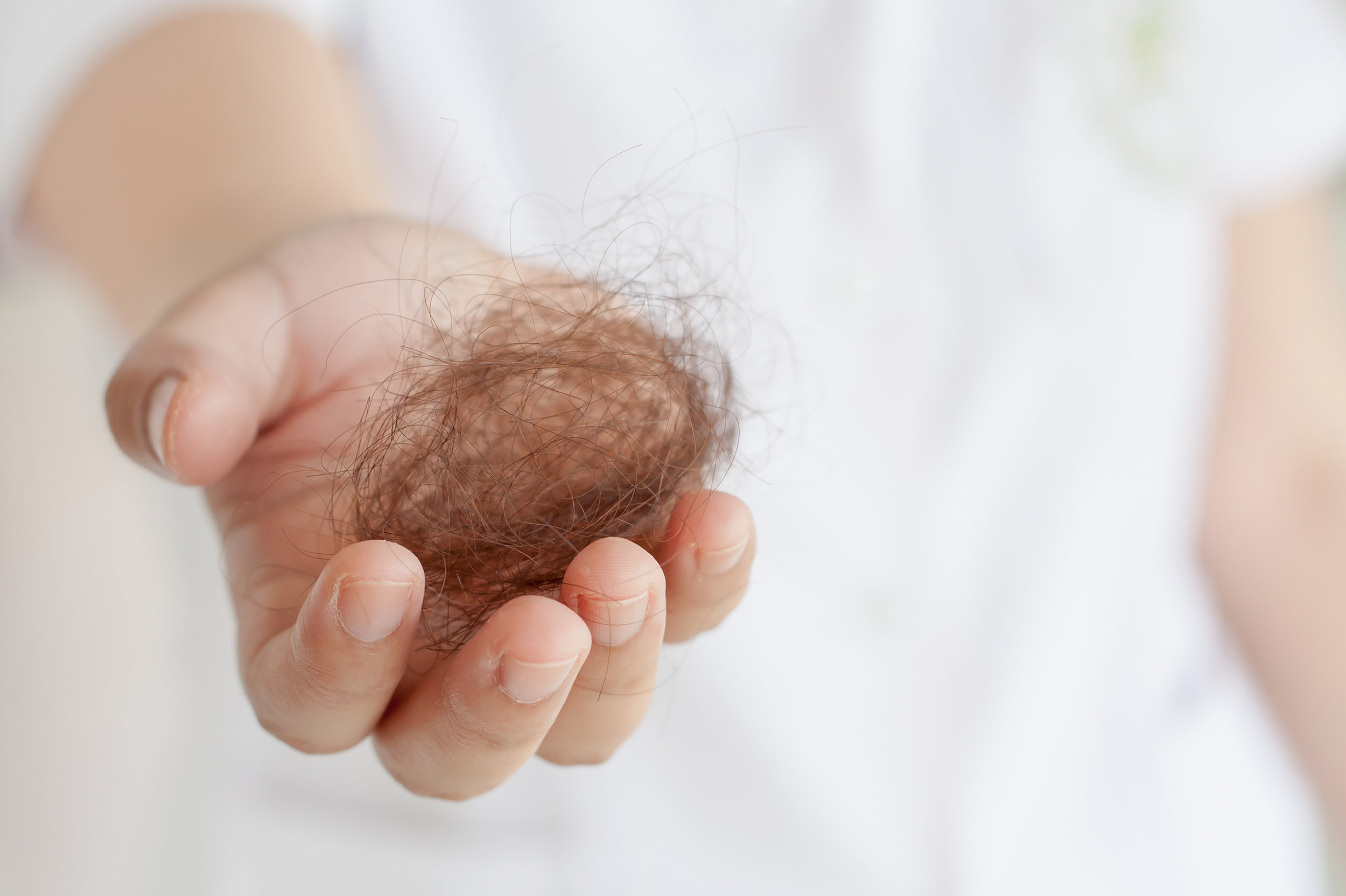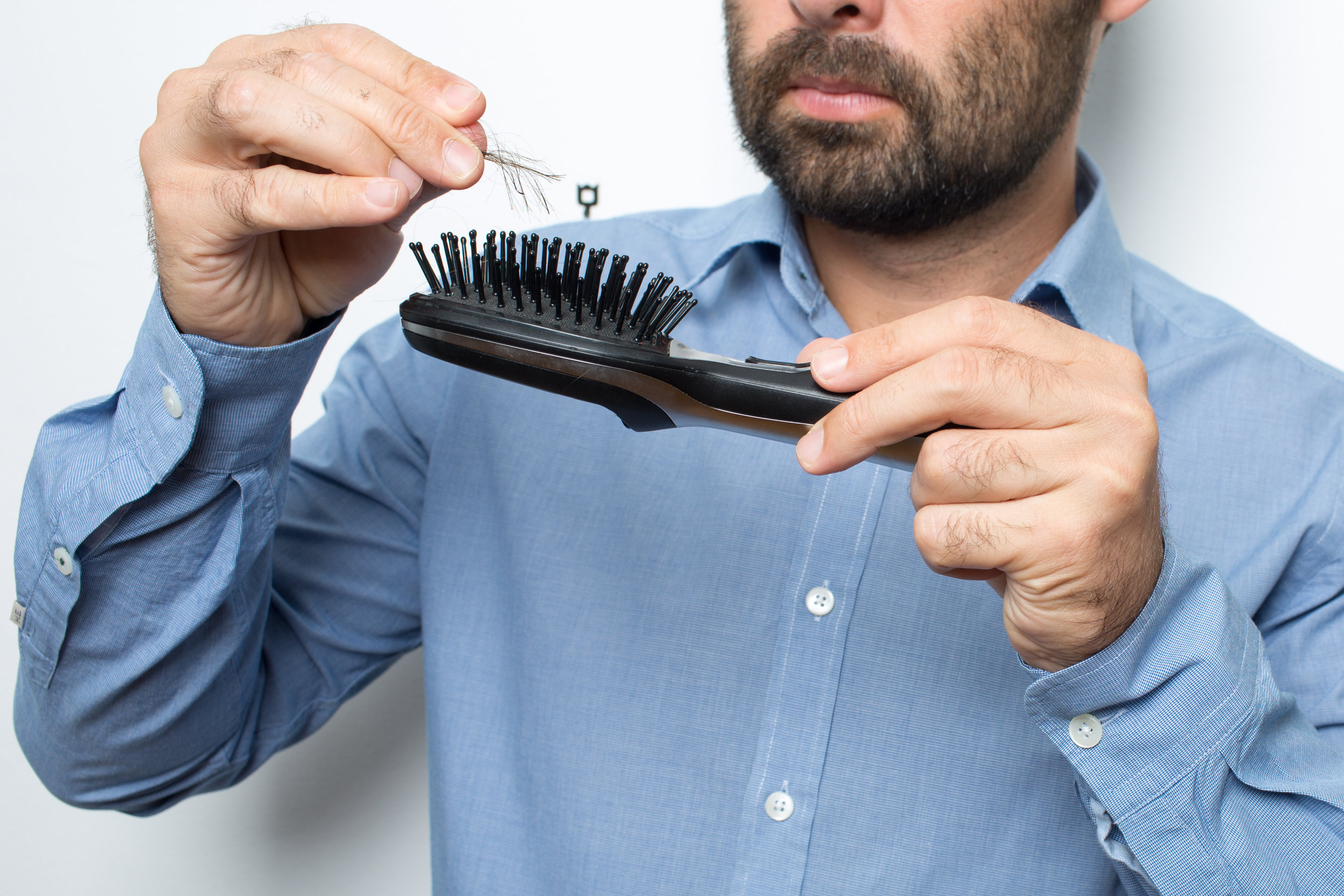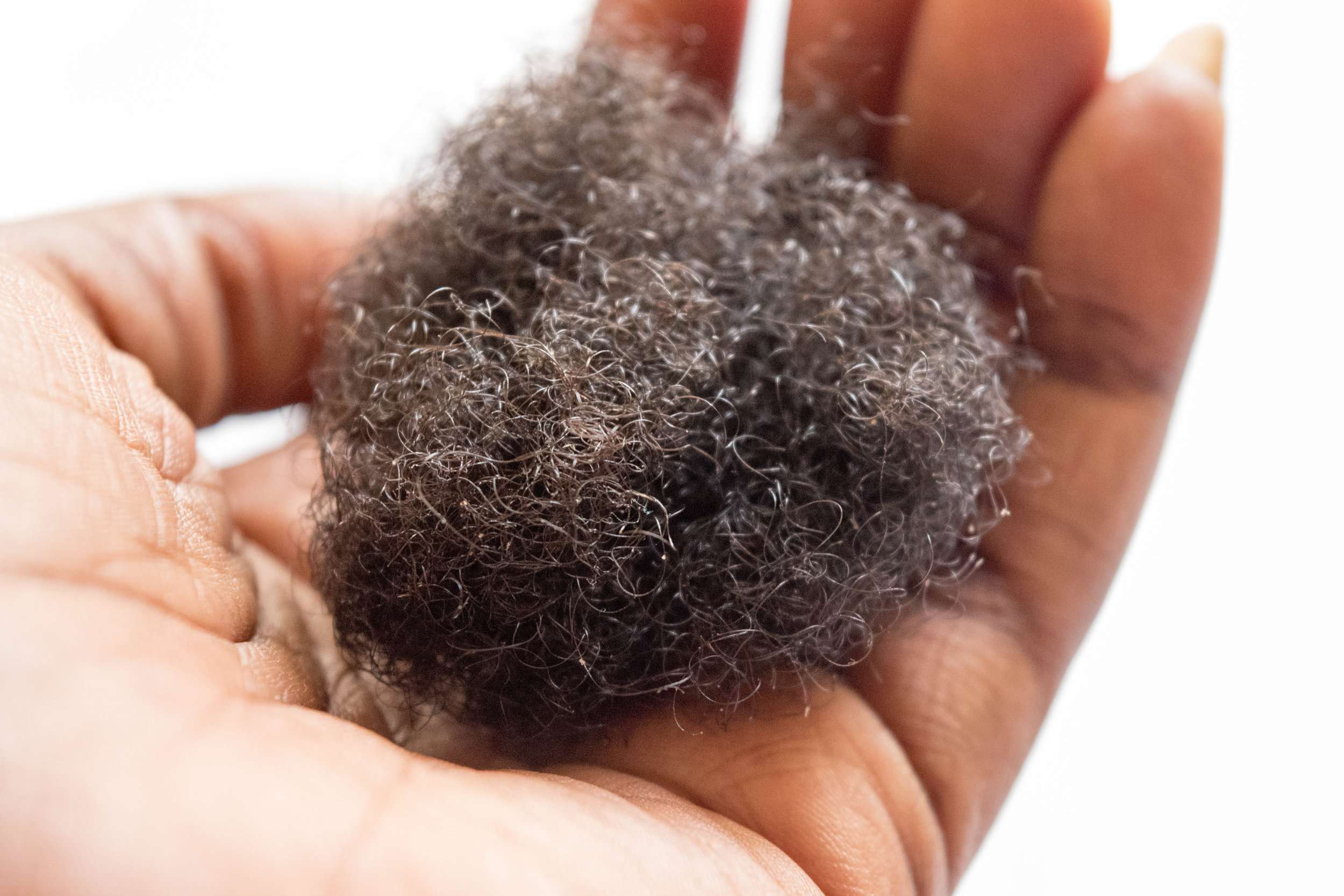Telogen Effluvium
Clinical Presentation (1)
Telogen is the 3rd phase of the hair cycle. It typically lasts 3-5 months on the scalp. During this phase, the hair is described as a club hair (hair with “bulb” of keratin at the root- white bulb root) (1). Approximately 10% of the hairs are cycling in this phase. It is not abnormal for human beings to lose 50-150 telogen club hairs a day.
Acute telogen effluvium (TE) is a nonscarring, diffuse, self-limited scalp hair loss condition. It was 1st described in 1961 (2), typically occurs about three months after a triggering event, can last up to 6 months, and affects less than 50% of the scalp hair (1). TE is typically not associated with any symptoms and frequently located on the temporal scalp (1).
Chronic telogen effluvium (CTE) lasts more than six months (can last several years) and hair shedding can be alarming and excessive (1, 3)
Epidemiology(1)
TE is the most common cause of diffuse hair loss/ shedding and can affect men and women. The exact prevalence is unknown
CTE typically affects women age 40-50 (1, 3)
Causes (1)
TE occurs when an increased amount of anagen hairs (hair in the growth phase) are triggered to enter the resting/ telogen phase. Triggering factors include:
Post-partum
Febrile states: Infections (HIV, syphilis, tuberculosis)
Stress: Emotional, starvation, difficult labor, crash diet, major surgery, severe bleeding
Medications: Oral contraceptives, oral retinoids, anti-seizure, lipid-lowering, anti-thyroid, blood pressure (beta-blockers, captopril)
Systemic disease: Thyroid, kidney, liver, autoimmune (lupus)
Nutritional deficiencies: Iron, zinc, general malnutrition
Other: Hair dye
CTE can be primary (no triggers) or secondary (triggered by TE- see above).
Diagnosis (1)
Diagnosed via history, clinical scalp and hair exam (“hair pull” test), dermoscopic evaluation and laboratory tests.
Clinical exam / “pull test”:
A person is asked not to wash the hair for more than 24 hours. The thumb and the index finger are then used to grasp 40-60 closely grouped scalp hairs as gentle traction is applied. A positive test, signaling excessive telogen shedding, occurs when more than 10% of the hairs (>4-6 club hairs- white bulb) are easily pulled out (normal is 2-3 hairs).
Lab tests (based on history and symptoms): Endocrine (e.g thyroid), nutritional (zinc, iron, ferritin) autoimmune disorders (ANA), other (complete blood count)
Clinical Imitators (Differential Diagnosis) (1, 4)
Female pattern hair loss, CTE, anagen effluvium (abrupt shedding of hair due to drugs- chemotherapy, infections, radiation, and autoimmune conditions), loose anagen hair syndrome (hair loss condition seen in children in which anagen hairs are easily and painlessly plucked from the scalp), diffuse type of alopecia areata, psychogenic pseudoeffluvium (normal scalp density and no clinical evidence of hair loss,




